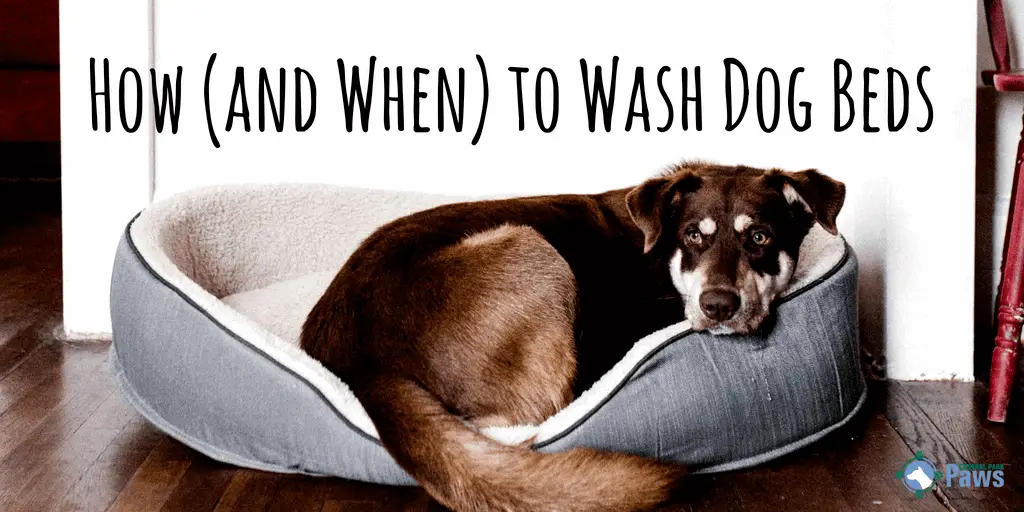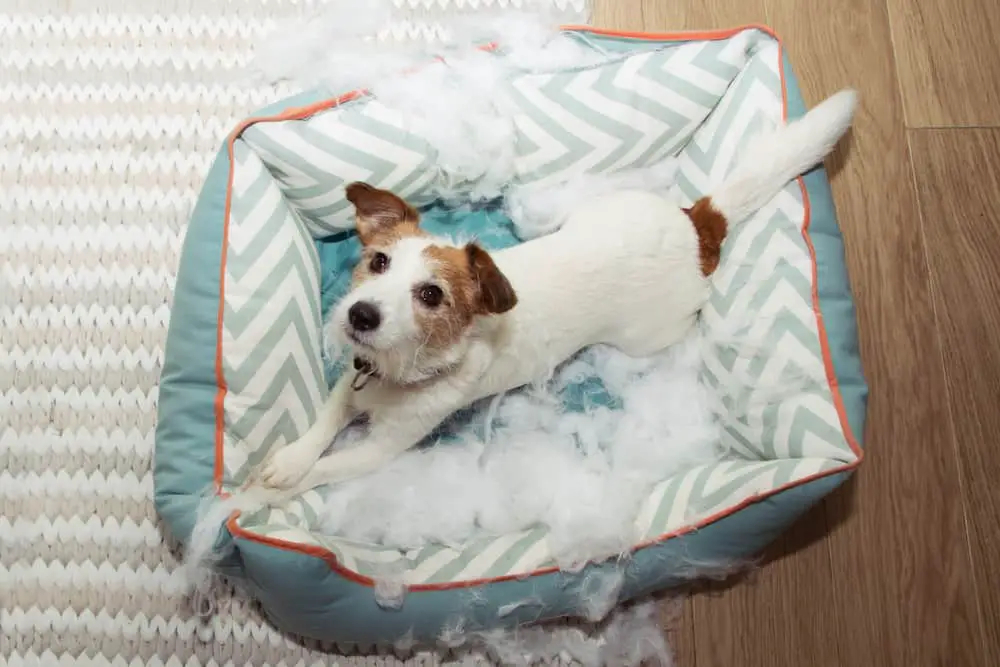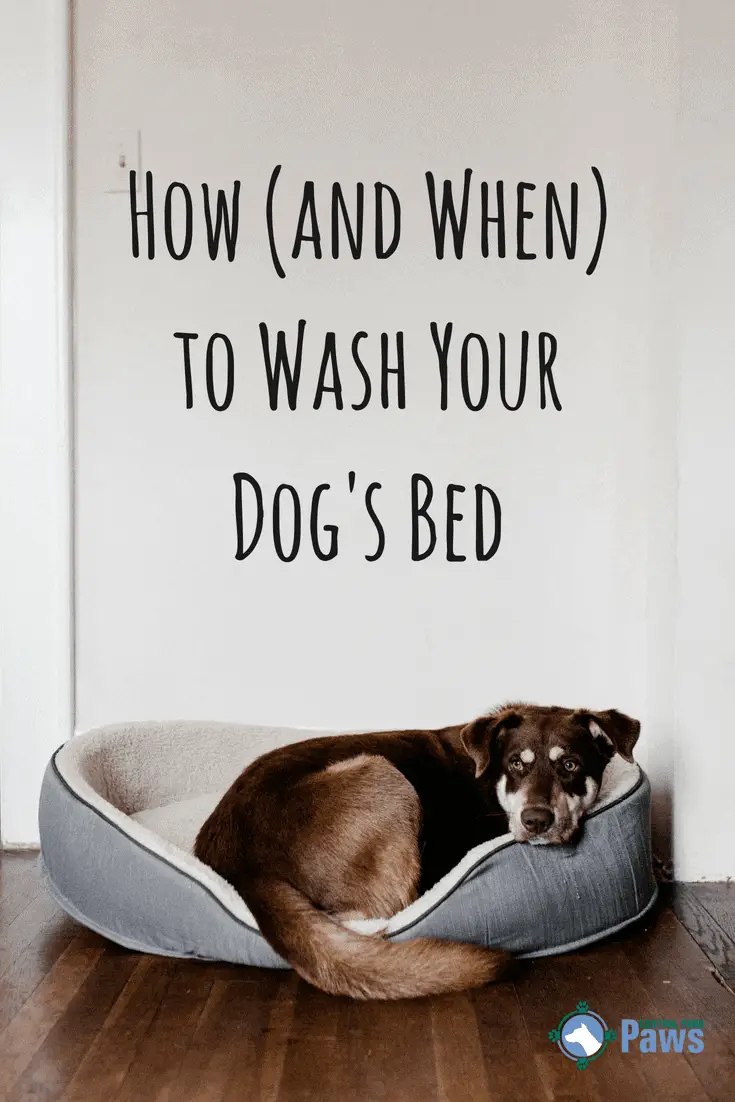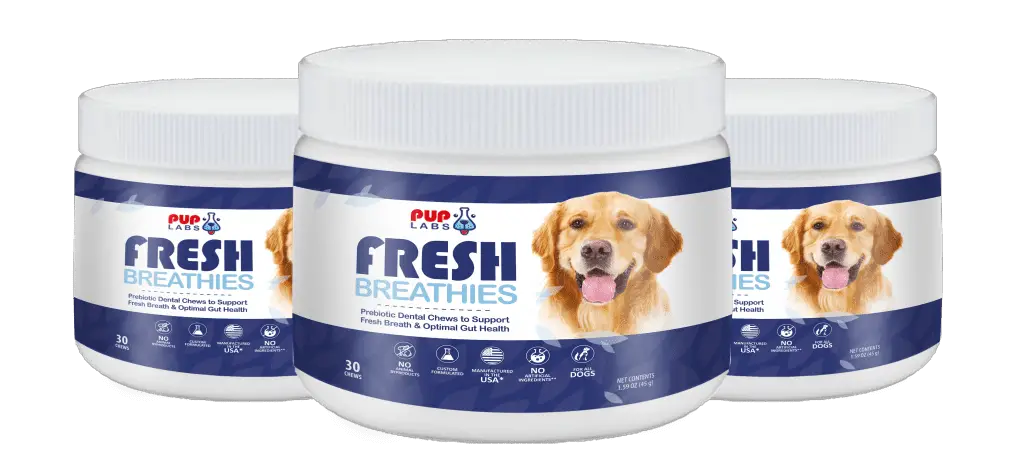“Oh, my God! What is that SMELL!?! Did something crawl in here and die? No, I’m telling you, honey, there’s DEFINITELY something dead in here. Look, I’m not kidding. I’m about to just call a realtor and leave.”
If you forget to wash your dog’s bed regularly, don’t worry. You’ll get a reminder soon enough.
Mine came in the form of a phone call from my husband threatening to sell our whole house.
I’ve always found it funny how my dog’s beds can magically go from relatively unnoticeable to mustard gas status seemingly overnight. It’ll gag you.
Why Should You Wash Your Dog’s Bed?
Besides unbearable smells, dogs can carry a lot of different diseases that can reek absolute havoc on your household if not properly addressed. And I’m not just talking about misadventures with fleas.
It can get much worse than that.
There are plenty of organisms that can make you sick out there that don’t need to stay on an animal in order to live. Some pests can live on pet bedding for up to a year after they’ve transferred off of their host.
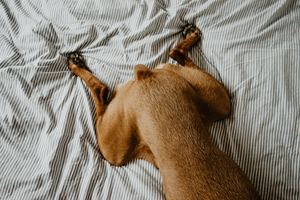
If it smells like dog butt, it’s probably time.
Frequent washings are also a good way to help avoid triggering allergies in those sensitive in the home with loose dog fur, dander, and dust.
Bathing your dog regularly also helps with this.
How Often Do You Need to Wash A Pet Bed?
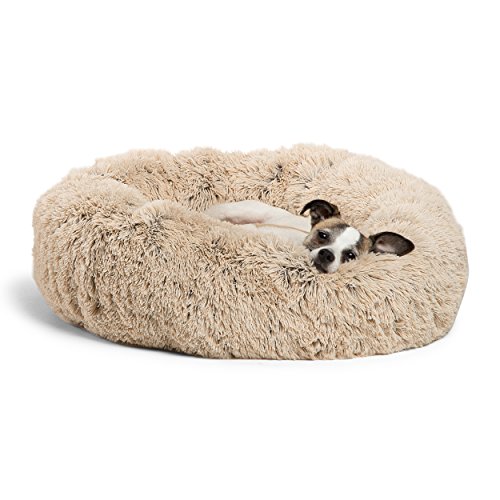
That’s why it’s important to have a sturdy dog bed that can withstand frequent washings.
Regular washing of your pet’s bed can help remove eggs from fleas and keep odors out of your house.
Again, this can also help with keeping allergies at bay if a person in the household suffers from reactions to pet dander or dust.
Just try to maintain a habit of adding “wash dog’s bed” to your weekly laundry list.
How to Wash a Dog’s Bed
Pre-treat
Before you actually wash your pup’s bed, you can try an assortment of pre-washing techniques in order to help with the cleaning process.
Giving the bed a quick vacuuming or shaking off any loose dirt and dander can help reduce the mess left in your washer. Using a lint roller can also help remove stuck on dirt or dog hair.
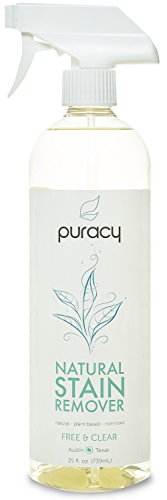
You can take the bed outside and use the garden hose to spray the bed off as well.
Be careful to prop the bed onto something such as concrete if you do this so you don’t just end up getting the bed even filthier than it was to begin with.
After you’ve gotten off as much debris as possible, you’ll want to remove any stains with a stain remover. An enzyme cleaner might also be helpful.
It’s not necessary to complete all of these steps each time you wash your pup’s pillow.
Just find what works best for you to remove as much dirt and dander as possible before loading the dog bed into your clean washer.
Pre-soak
Soaking the dog bed in hot or boiling water for two to three minutes will help you rid the bed of bugs if you think that you may have an infestation.
Be sure to watch the bed carefully during this process in order to ensure that the hot water is not going to cause damage to the bed.
Washing Machine Settings
Reading the label on the dog bed will help you find out what temperature the bed’s manufacturer recommends.
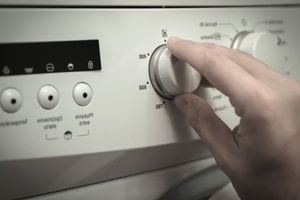
Also, some you can wash on a normal setting while others may need a delicate cycle.
If there is any uncertainty as to what setting to put the washing machine on, such as no tag, it’s probably best to err on the side of caution and stick it on a delicate cycle.
Laundry Detergent
Avoid using harsh chemicals as best you can. Some dogs are allergic to certain chemicals, and coming into contact with them can cause skin irritations for your pup.
If you do have to use something strong, such as bleach, try to use as little as possible and be sure to add an extra rinse into the cycle.
Use a laundry detergent that is hypoallergenic and dye free like this one or a pet-friendly detergent like Alpha Tech’s LaundraPet. This will help ensure that the dog will not have any sensitivity to their bed once it is washed.
You can also use a laundry booster (I strongly recommend Skout’s Honor for owners of older dogs who might have incontinence issues) if your pet’s bed is extra stinky.
Types of Washing Machines
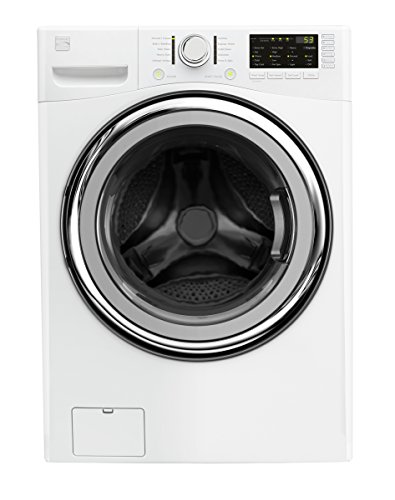
Remove cover from the dog pillow, if you are able to, and put the cover and bed insert into the washer. Allow it to soak in the water and detergent for at least fifteen minutes.
If the insert is a heavy foam insert, then hand washing will work best to help avoid the foam ripping apart during the washing process.
If you must machine wash the foam insert, try using the delicate cycle.
If the dog bed has not been washed in a while or has more dirt or odor than normal you should add an extra wash cycle.
Post-wash for washing machine
After washing the dog pillow, you will want to follow up with a cycle of hot water with ½ a cup of bleach before being you throw in a regular load of dirties.
Hand Washing
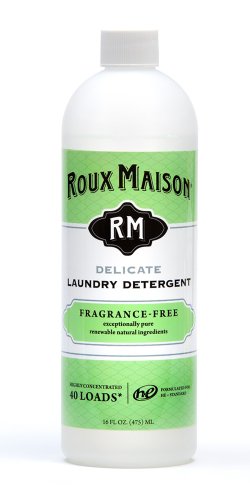
The alternative are hand washing your dog’s bed or making a trip to a laundromat to use a commercial sized washer.
You will want to do the pre-washing steps that are posted above such as vacuuming, lint rolling, or hosing the bed off beforehand, just as you would in preparation to machine wash your dog’s bed.
After the pre-washing, begin to soak the bed in hot water in a tub with laundry soap.
There are some laundry soaps that are specially formulated for hand washing like Roux Maison’s and respond well to agitating without the machine.
When the water is cool enough for you to be able to put your hands in, you can begin the hand-washing process.
- Work the bed in the water squeezing while agitating the water with your hands.
- After squeezing and removing as much dirt as possible let the water in the tub out and add clean water in to rinse out the dog bed.
- Repeat the rinsing and squeezing process until you no longer have dirt or bubbles appear when squeezing.
Drying a Dog Bed

Another advantage of drying your pet’s bed in the you won’t have to worry about any ripping or lumping, causing the bed to be misshapen, that can occur when you use a dryer.
If the bed is small enough to fit and it’s within accordance with the manufacturer’s recommendations, a standard laundry dryer is another way to help dry the dog bed.
Whatever method you chose, you’ll need to ensure that the bed is fully dry to avoid mold growth in the foam inserts.
Spot Cleaning
There are different techniques that can be used to clean off items so you do not have to wash the dog bed so often.
Mud
For mud on your pup’s cushion, you can take a wet wash cloth or paper towel and wipe until it is as clean as possible. Once the mud has dried, you can then proceed to vacuum the dog bed and remove what is left.
Urine
If your pet has urinated in their bed, you can take a cloth or towel and soak up the wetness off of the bed.
After that, you can apply a mixture of 2 cups vinegar, 2 cups water, and 4 tablespoons of baking soda.
If the pee has been there for a while and seems to have stained the bed more than usual, you can add baking soda straight onto the dog bed and then apply the vinegar mixture onto the baking soda.
Allow that to set for 10 to 15 minutes and then apply pressure with a towel to clean up the discoloration.
Vomit/Blood
Cleaning up vomit or blood off of the dog bed is not like cleaning up urine. You want to take a towel and clean up as much as possible off of your pet’s pillow.
You will make a mix of 2 cups of warm water, 1 tablespoon of salt, 1 tablespoon of a type of liquid dish soap and ½ cup of vinegar.
Using a sponge, dip it into the solution and blot and scrub the stain. I find that applying the salt directly to the stain helps the scrubbing process work better.
If the stain doesn’t appear to be fading using this method, you can use baking soda directly on the stain, mix the hydrogen peroxide and the liquid dish soap together and apply it onto the baking soda.
Also try using a scrubber or an old toothbrush to remove deep stains if the sponge is not working.
Once the Bed is Clean
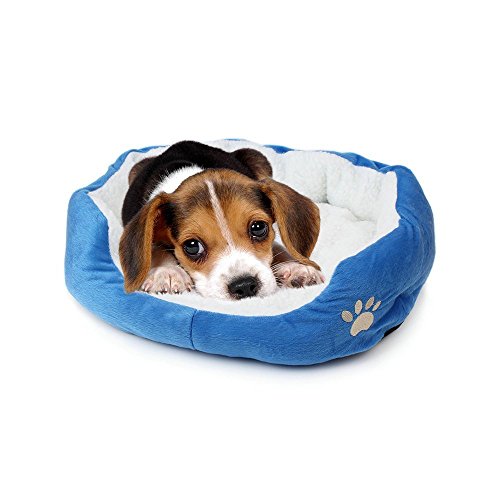
This can help with allergies in the home, increase the lifespan of the bed, and prevent unpleasant odors from occurring.
Having a waterproof cover can help minimize frequent washings if your dog is having frequent accidents.
Placing a blanket over the dog bed and washing it every few days is another way to help the dog bed stay cleaner and prolong the life of the bed.
You can also make a spray that you can use daily to help reduce the odors from the bed.
If you add a teaspoon of baking soda with a cup of warm water, you can help keep odors at bay between washings.
To help with disinfecting, you can add several drops of tea tree oil to the spray.
Still Smelly?
Got the dog’s butt clean, the dog’s bed clean, but still having problems with pet odors? There may be an underlying cause.
It’s also entirely possible that you’ve overlooked cleaning your dog’s stuffed toys. They can kick up a pretty powerful funk, too. Or it could be that it is simply time to purchase a new dog bed.
FAQs
Is it OK to wash dog bed in washing machine?
Probably. If your dog’s bed is too large, doesn’t have a removable cover, or specifically states not to use a washing machine, you’re going to have to wash it by hand. Be sure to check the tags on your bed to see if it is machine washable.
How often should you wash a dog bed?
Depends. We recommend washing at least the cover once a week (when you’re doing your other laundry). But if your pup doesn’t use it much, doesn’t like to play in the dirt or dead things, or doesn’t shed, you might be fine with once a month. Not only does washing often help with the smell, it can also help your allergies and prevent fleas from breeding.
What temperature should I wash my dogs bedding?
Hot. It should be at least 140 degrees (F). This is to kill any germs, parasites, and bacteria that might be living and breeding in the place your dog sleeps every day. Remember, washing your dog’s bed isn’t just to clean off dirt and smells, it’s also to disinfect it.
Can fleas live in dog beds?
Abso-flipping-lutely. Using hot water and, if possible, bleach will end these little buggers’ rent-free staycation and keep your canine safe.
How can I make my dogs bed smell better?
You can create a homemade spray to deodorize your dog’s bed by mixing a teaspoon of baking soda with a cup of hot water. Add in a couple of drops of tea tree oil for disinfecting and a minty smell.
How do you treat dog bed for fleas?
BURN IT! BURN IT WITH FIRE!
Seriously though, hot water and bleach are your two best friends here, along with regular washing.

